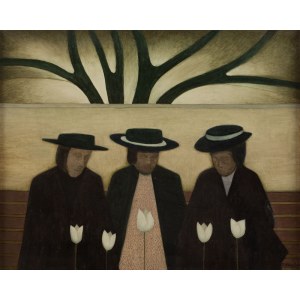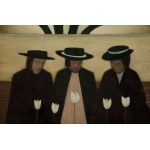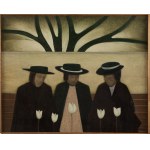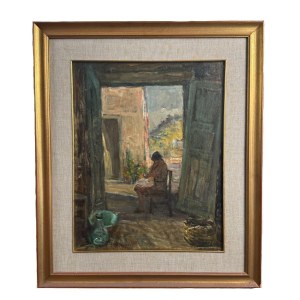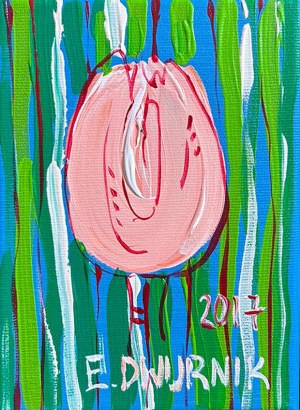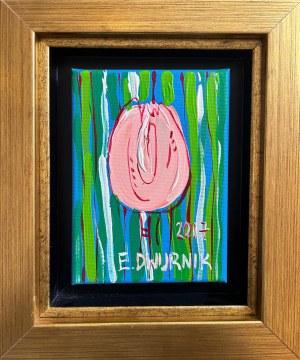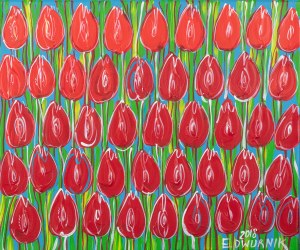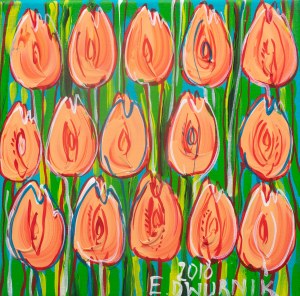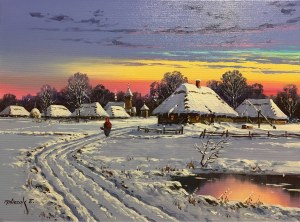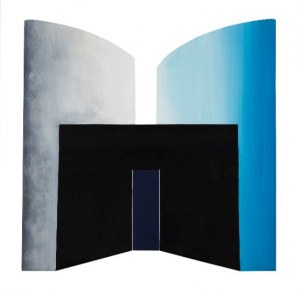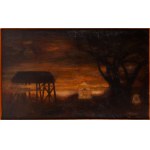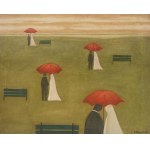Dimensions: 65 x 81 cm
Signed and dated p.d.: 'Z. Struzik 69'
Literature
When we think of the Netherlands, a whole set of stereotypical notions and images invariably pops up in our heads: bourgeoisie (serious patricians in black clothes), tolerance, great painting, a country ripped out by water (polders and dams), and finally windmills, cheese, and of course tulips....
Every investor has probably heard of tulipomania. In the 17th century, the price of tulip bulbs in the Netherlands rose dramatically. At its peak (in 1636), the equivalent of a tenement house in Amsterdam was offered for one bulb of a rare variety of tulip! Of course, these were very isolated cases, but it is a historical fact. Just as it is a fact that in February 1637 this bubble burst. Until recently, Tulipomania was considered the largest speculative bubble in history. The mischievous claim that it will only be surpassed by Bitcoin.
Because it was a unique event, numerous poems, songs and works of painting and literature have been written about this speculative bubble, such as Zbigniew Herbert's essay "Tulips' bitter fragrance."
"How did it happen that in the enlightened Netherlands, and not elsewhere, the tulip mania reached such frightening proportions, shook the foundations of a solid national economy and dragged representatives of all social classes into a gigantic gamble?" This is precisely what Herbert was pondering.
You can read about Tulipomania in Charles Mackay's book "The Unusual Illusions and Madness of Crowds," on which several generations of investors were raised. Unfortunately, the author did not pay much attention to methodology. He drew information for his book mainly from... songs and satirical poems! These were quite popular in the second half of the 17th century, after the price of tulips fell dramatically.
Of course, the songs and poems had little to do with historical facts. However, they were the inspiration for many works of art, such as for the painting "Tulipomania" by John Breughel the younger. In the painting, one of the figures urinates on almost worthless tulips, after the bubble has already burst. This scene perfectly illustrates the emotional state of an investor after his hopes of making a gigantic profit have been dashed. Fortunately, there were far fewer such disappointed investors in 17th-century Holland than is commonly thought.
The symbol of the 17th-century Netherlands, in addition to investment in tulip bulbs, was the Amsterdam Bank of Bills of Exchange and the Amsterdam Stock Exchange, which opened in 1611. Its position was so strong that the rates of several hundred commodities were quoted on it. The prices thus established were largely valid throughout Europe. Amsterdam thus became a world financial center. In addition, this very city was the largest shareholder in the Dutch East India Company. It was the first global concern to finance itself by issuing securities. The Company had factories in many foreign ports, and traded products from all over the world. The Company's economic power promoted the enrichment of not only merchants, but also of all Amsterdam burghers. This caused the city's residents to have a lot of cash, which many of them decided to place in tulips precisely.
These beautiful flowers came to the Netherlands from Turkey in the mid-16th century. Their Dutch name "tulpen" was meant to refer to Turkish turbans.
Biography
In 1954-60 he studied at the Academy of Fine Arts in Warsaw at the Faculty of Interior Design and in 1957-58 at the Technical University of Lausanne at the Faculty of Urban Planning and Architecture. He presented his works in numerous individual and collective exhibitions, including: Painting, sketches, Gallery ST. Paul, Stockholm 1973; painting "Dreamed Space", SAP, Warsaw 1975; International Group, painting, Stockholm 1973; "V Festival of Fine Arts", Zachęta Gallery, Warsaw 1974; 1st International Triennale of Drawing, Wroclaw 1978; Pastels from the Holy Cross Mountains, Rozmaitości Gallery, Gliwice 1984; Interart`85, Poznan 1985. He is the author of many projects and realizations in the field of exhibitions. He designed exhibitions at the Historical Museum of the City of Warsaw, the exhibition "Polish Stamps" in London, the traveling exhibition "Schools of the Millennium" presented in England, France, Canada and the USA.



